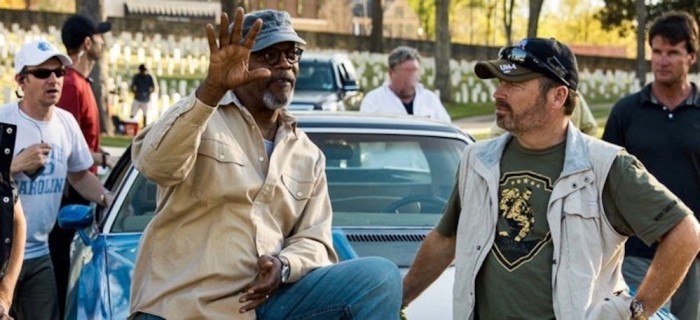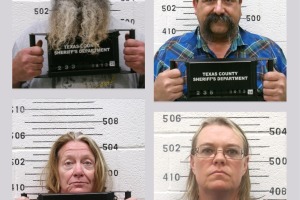‘The Last Full Measure’ director praises actions of COVID-19 responders risking their lives

“The Last Full Measure” is being released in the midst of the new coronavirus pandemic and the film’s director says he's honored to see the actions of first responders who are serving their communities because their selfless sacrifice reminds him of the film’s Vietnam War hero.
“The Last Full Measure,” which is now available on Amazon and will be released on Blu-ray/DVD on April 21, tells the true story of William "Pits" Pitsenbarger, a U.S. Air Force pararescuemen who saved over 60 men in more than 250 combat missions during the Vietnam War.
Written and directed by Todd Robinson (“Outsiders”), the film centers around the Battle of Xa Cam My and Operation Abilene in which Pitsenbarger was killed. It details the government secrets that followed and his friends and family's 30-year battle to ensure "Pits" received the recognition he deserved, a Medal of Honor.
The movie features a cast of notables, led by Sebastian Stan (“Avengers: Endgame”), and Jeremy Irvine (“War Horse”). As well as Samuel L. Jackson, Ed Harris, William Hurt, Christopher Plummer, Diane Ladd, and taking his final bow, Peter Fonda.
The film is rated R and is set in two time periods. First, during a rescue mission in 1966, where viewers will see William H. Pitsenbarger is offered the chance to escape on the last helicopter out of a combat zone but instead he opts to stay behind to save and defend the lives of his fellow soldiers of the U.S. Army's 1st Infantry Division. And while he saved over 66 men, he was killed during the bloodiest battle of the war. The second part of the film happens three decades later when one Pentagon staffer fights to make sure his memory is honored.
The following is an edited transcript of The Christian Post's interview with Robinson who talks about the journey of making the film, what he hopes others will take away from it and how Pitsenbarger’s sacrifice is relevant to the current COVID-19 crisis.
CP: Tell us about “The Last Full Measure” film.
Robinson: The movie is about William Pitsenbarger, an Air Force pararescueman, who on April 11, 1966, and during the Vietnam War, volunteered to go in by helicopter and descend onto a jungle penetrator into Operation Abilene, about 40 miles north of North Saigon.
In one of the bloodiest battles where everyone was hurt and there were about 90% casualties, Pitsenbarger came down and triages and evacuates other soldiers. He was ordered to go back up but he refused.
He stayed on the ground to gather weapons, food, water and fight alongside these Army men, but he lost his own life by a sniper. The movie tracks the 34-year journey through the eyes of a young Washington bureaucrat who was tasked with the job of re-interviewing the soldiers about a posthumous Medal of Honor and put it before Congress.
Q: How is Pitsenbarger’s example of courage relevant to the COVID-19 crisis?
Robinson: Pararescuemen like William Pitsenbarger are very special people. Not only because of their vast life-saving skill sets, but because of their tremendous commitment to the well-being and safety of others. Their credo, “These things we do, that others may live” is taken quite literally. These men will trade their lives for yours.
In this moment of COVID-19, it’s difficult not to make comparisons to the heroes on the front lines in our medical communities. They inspire us with their courage and focus, pushing through their fear in order to save lives. William Pitsenbarger’s sacrifice is measured by the two-and-a-half generations he saved and their descendants.
Q: Where did the title of the film come from?
Robinson: “The Last Full Measure” title comes from The Gettysburg Address and it speaks to the last full measure of devotion and that speaks beautifully to Pitsenbarger’s valor. I also heard it from a newscast where Peter Jennings used that phrase to describe Pitsenbarger’s valor. When I heard that, it made sense to me and it really stuck with me. It is also chiseled on the walls of the Lincoln Memorial.
Q: What is the importance of telling William Pitsenbarger’s story?
Robinson: This is the ultimate story of valor and sacrifice of service over self. The story of William Pitsenbarger is one of the great untold stories of the Vietnam War. It took us 20 years to make the film and 32 years for the veterans he saved to get him the Medal of Honor.
Q: What is your hope for audiences who see this film?
Robinson: I hope audiences realize that even a random act of kindness placed decades before can have a true impact on other people and that’s what really happened to William Pitsenbarger. He gave his life in 1966 and here we are today and we are still talking about him. He is an example of true valor and bravery for others and it is a tremendous example for us even now. For these men to put the story in my hands was a great responsibility and a great privilege.
Q: Was it difficult to get the cast on board for the film?
Robinson: All the actors were moved by the story and felt a connection to it because this is their generation’s war and they were available at the time. They were wonderful to work with and easy to direct because they are such fine actors. The cast were all of an age to be drafted during the Vietnam War, so when they signed on they knew they were paying tribute to the sacrifices that people they knew made on behalf of the rest of us.
Q: Why was it difficult for the U.S. government to award the Medal of Freedom to Pitsenbarger at the time?
Robinson: There was so much going on during that time during the middle of a war and recognizing one man’s valor probably was not the foremost thing on the military’s mind.
Pitsenbarger was only the third enlisted airman to ever get the Medal of Honor. In context of politics at that time, they put him up to the medal and it went all the way to the White House. It was downgraded to an Air Force Cross and now 30 years later the mud soldiers, who were not even Air Force, realized he had not received the award and went to work to make sure his valor was ultimately recognized.
In April 2000, the ceremony was held at the Air Force Museum in Dayton, Ohio, with survivors and their families flown in from all over the world. The ceremony scene reenacted in the film featured survivors of the battle.




























